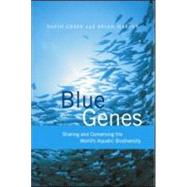
Note: Supplemental materials are not guaranteed with Rental or Used book purchases.
Purchase Benefits
Looking to rent a book? Rent Blue Genes: Sharing and Conserving the World's Aquatic Biodiversity [ISBN: 9781844071067] for the semester, quarter, and short term or search our site for other textbooks by Greer, David; Harvey, Brian. Renting a textbook can save you up to 90% from the cost of buying.
| List of Photographs, Figures and boxes | vii | ||||
| Preface | ix | ||||
| Acknowledgements | xi | ||||
| List of Acronyms and Abbreviations | xii | ||||
| Overview | 1 | (22) | |||
|
15 | (8) | |||
| 1 The Gene Rush: Finding New Value in Aquatic Biodiversity | 23 | (38) | |||
|
24 | (5) | |||
|
29 | (3) | |||
|
32 | (21) | |||
|
53 | (1) | |||
|
54 | (7) | |||
| 2 Managing Aquatic Genetic Resources: Tools and Policy Gaps | 61 | (28) | |||
|
62 | (4) | |||
|
66 | (5) | |||
|
71 | (4) | |||
|
75 | (7) | |||
|
82 | (2) | |||
|
84 | (5) | |||
| 3 Whose to Share? Ownership and Control of Aquatic Resources | 89 | (24) | |||
|
91 | (7) | |||
|
98 | (4) | |||
|
102 | (3) | |||
|
105 | (5) | |||
|
110 | (3) | |||
| 4 Thinking Locally: Rights of Indigenous and Local Communities | 113 | (30) | |||
|
114 | (7) | |||
|
121 | (6) | |||
|
127 | (7) | |||
|
134 | (1) | |||
|
135 | (8) | |||
| 5 Acting Globally: National Laws on Access to Aquatic Resources | 143 | (36) | |||
|
144 | (3) | |||
|
147 | (2) | |||
|
149 | (2) | |||
|
151 | (10) | |||
|
161 | (2) | |||
|
163 | (3) | |||
|
166 | (13) | |||
| 6 Results that Count: Meaningful Benefits for Fishing Communities | 179 | (22) | |||
|
180 | (3) | |||
|
183 | (3) | |||
|
186 | (3) | |||
|
189 | (6) | |||
|
195 | (1) | |||
|
196 | (5) | |||
| 7 Putting Principles into Practice | 201 | (12) | |||
|
202 | (1) | |||
|
203 | (5) | |||
|
208 | (3) | |||
|
211 | (2) | |||
| Notes | 213 | (2) | |||
| References | 215 | (12) | |||
| Index | 227 |
The New copy of this book will include any supplemental materials advertised. Please check the title of the book to determine if it should include any access cards, study guides, lab manuals, CDs, etc.
The Used, Rental and eBook copies of this book are not guaranteed to include any supplemental materials. Typically, only the book itself is included. This is true even if the title states it includes any access cards, study guides, lab manuals, CDs, etc.